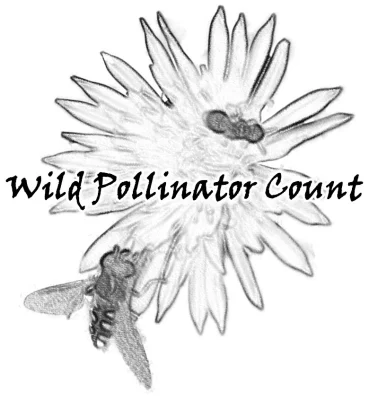How do you spot the difference between bees and wasps (Hymenoptera) or flies (Diptera) when you only see them flit between flowers? Many identification resources focus on characteristics that you can only see if you have the insect under a microscope, which makes it hard for identifying them in action.
Below are some very basic things you can look for to help you to categorise and report insects for the Wild Pollinator Count. Our guide to common pollinator insects may also help.
If you can’t be sure, try and get a close-up photo (Hint: if you miss a photo opportunity the first time you see the insect, many insects will return to the same place to get food throughout the day, so a bit of patience may reward you!)
N.B. These are generalisations. Some species within each group don’t conform to every one of these characteristics. Compare across the range of characteristics and select the category that has the most ‘matches’.
Click on an image to see a larger view.
Download for printing:

Pollinator Insects Identification Tips by Wild Pollinator Count is licensed under a Creative Commons Attribution-NonCommercial-ShareAlike 4.0 International License.








Great tips thanks, helps sort them a little so we can then use other resources to try identification of our insects.
LikeLike
Very useful identification resources, especially as we seem to be having a real increase in European wasps here on the far south coast of NSW. Thank you
LikeLike
I our kitchen we found what Google calls a ‘wasp fly’ do you know what it could be?
LikeLike
Thanks for the news, I think it will be helpful to me.
LikeLike
A very helpful guide, thankyou
LikeLike
What a great project. Very helpful comments and pictures. Is it important to distinguish between native Australian bees and honeybees? Some fo the Australian native bees seem to look a lot like the flies on your pictures and I’m not sure how to tell them apart.
LikeLike
Thanks Michael! Yes, for our count we have separate categories for European honey bees and native bees, so you will need to report them separately. It’s true that some native bees can look like flies – we hope that our identification tips are helpful enough to identify the basics, and this is why we have kept our categories at broader levels, rather than expecting people to identify to species. If you do see something that you really aren’t sure what it is, it would be best to leave it out of your count, or write it into the Other column if you can describe it.
LikeLike
I HATE PDFS!!!!
LikeLike
Thanks- helpful info to distinguish between bees & wasps etc but most of us non-experts would probably also benefit from a picture of all the most common ones we are likely to see.
Or are there just too many of them?
LikeLike
Hi Terry, yes there are about 2000 native bee species and tens of thousands of native wasp species in Australia! We have tried to use images of the most commonly seen ones in our guides, but of course there will be plenty of others. The ID tips are based on most common features to help you. Even for experts, it’s really hard to identify to species from a photo or a single observation on a flower, so we don’t expect you to ID species for this count. Cheers Manu
LikeLike